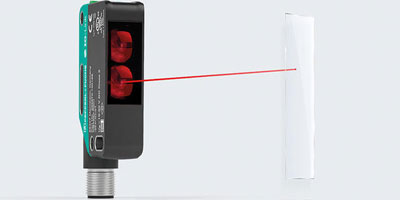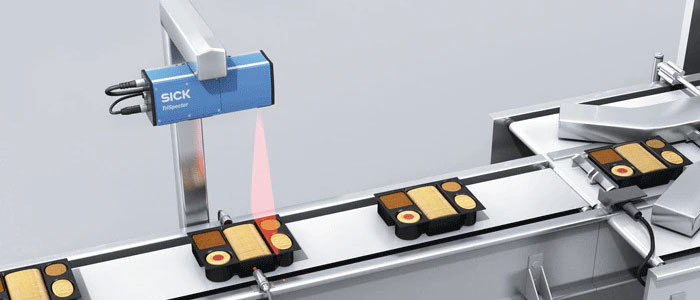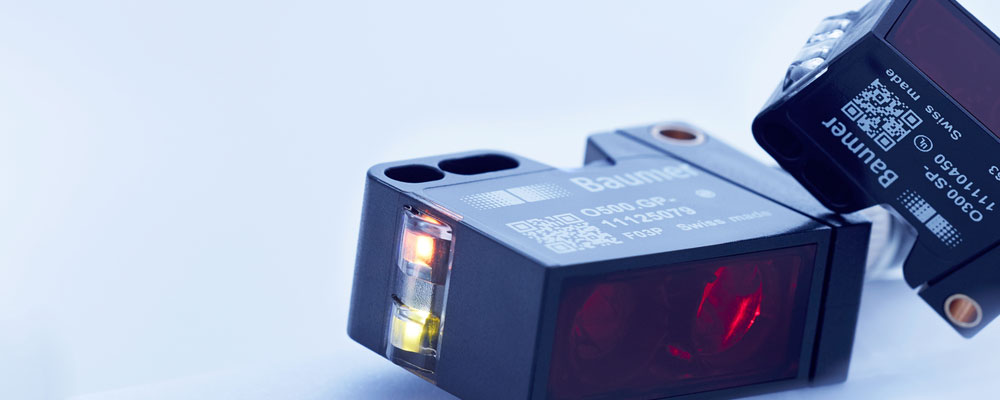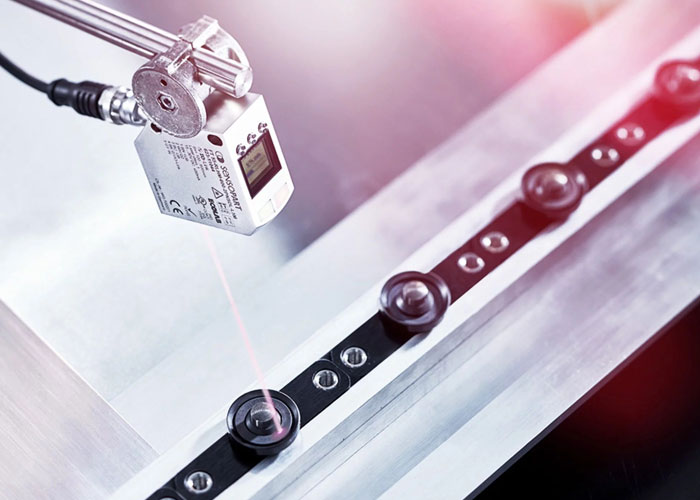How to Choose the Right Photoelectric Sensor
A photoelectric sensor is a versatile device used in various industries to detect changes in light intensity. The sensor works by emitting and receiving a light beam, used to detect different objects. There are three fundamental types: through-beam, retro-reflective, and diffuse sensors, each with distinct working principles.
Through-beam sensors detect small or clear items; retro-reflective sensors handle moderate distances in small spaces; diffuse sensors are great for tight spaces. They are widely applied in assembly lines, packaging systems, and robotics. Photoelectric sensors are key in automation, valued for their ability to detect diverse materials, sizes, and distances efficiently.
Photoelectric Sensor How it Works
Basic Functioning of a Photoelectric Sensor
A photoelectric sensor works by harnessing the power of light. Essentially, it consists of an emitter that projects a beam of light and a receiver that detects this light. The basic functioning of a photoelectric sensor relies on the interruption or reflection of the emitted light.
When an object comes into the path of the light beam, it disrupts the light. This disruption is noticed by the sensor’s receiver. Once the receiver detects this change in light, it triggers an output. This output often controls processes, operates machinery, or manages automated tasks.
Each sensor type (through-beam, retro-reflective, diffuse) operates by manipulating and detecting light changes.
The Role of Light in Detection
Light plays a pivotal role in photoelectric sensor detection. The sensor’s emitter creates a light beam, which could be either visible or invisible (infrared). This light beam is integral to the function of the sensor, as it forms the basis for object detection.
In a through-beam sensor, the light beam travels from the emitter to a receiver positioned directly opposite. Any object crossing this light path is immediately detected due to the interruption in light reaching the receiver.
In a retro-reflective sensor, an object is detected when it interrupts the reflected light that bounces off a reflector.
In a diffuse sensor, the light reflects off the object itself and is then detected by the sensor. So, an object is identified when the sensor perceives a change in the intensity of the reflected light.
Therefore, by strategically manipulating light, a photoelectric sensor can accurately detect the presence, absence, or even distance of an object.
The Interaction between Emitter, Receiver, and Object
In a photoelectric sensor, the interaction between the emitter, receiver, and object is the cornerstone of its operation. Let’s break this interaction down for a more in-depth understanding.
Emitter: The role of the emitter is to generate a beam of light, often infrared, towards a specific target or direction.
Object: This is what the sensor is meant to detect. It could be any item, object, or material that comes into the path of the light beam emitted.
Receiver: The receiver’s job is to detect the light that has been emitted. In through-beam sensors, the receiver detects the interruption when an object blocks the light beam. For retro-reflective sensors, the receiver detects the light reflected back from a fixed reflector when the light path is interrupted. In diffuse sensors, the receiver senses the intensity of light reflected directly from the object itself.
Understanding these interactions is key when using photoelectric sensors, as different applications might require different types of sensors. The choice of sensor type depends on the object and application requirements.
Photoelectric Sensor Types
In this section, we will provide an overview of these types, their operation, and their most common uses.
Through-Beam Photoelectric Sensors
Through-beam sensors consist of an emitter and a receiver, where the emitter sends out a light beam and the receiver detects it. When an object interrupts the light beam, the sensor triggers a response.
Through-beam sensors are highly accurate and have a long sensing range, making them perfect for detecting small, fast, or transparent objects. They are widely utilized in industrial automation, assembly lines, and safety systems. They also work well in harsh conditions where dirt, dust, or high temperatures may be present.
By understanding how through-beam sensors work, you can determine if this type is the right fit for your specific application. We will delve deeper into this in the coming sections.
Retro-reflective Photoelectric Sensor
Retro-reflective sensors consist of both an emitter and a receiver housed in the same unit. An external reflector is used to bounce the light beam from the emitter back to the receiver. When an object interrupts the light beam, the change is detected and a response is triggered.
Retro-reflective sensors are often used in scenarios where there is limited space due to their capability to detect objects at moderate distances. They’re especially efficient in detecting objects that are not easily detectable by through-beam sensors, such as transparent objects.
Diffuse Sensors
Unlike through-beam and retro-reflective sensors, diffuse sensors have both an emitter and a receiver in the same unit. The emitted light beam hits the target object and is scattered in all directions. Some of this scattered light returns to the sensor and is detected by the receiver, causing the sensor to react.
Given their design and function, diffuse photoelectric sensors are typically used in applications. Where space is limited, or where object detection is required within a shorter range. They’re especially useful in scenarios where the object to be detected is not uniform or has an irregular surface.
Photoelectric Sensor Specifications
This section will introduce the role of specifications in choosing the right photoelectric sensor. Understanding these parameters is crucial as they greatly impact the performance and suitability of the sensor for a given application.
Key Photoelectric Sensor Specifications Explained
Operating Principle: The operating principles such as through-beam, retro-reflective, and diffuse reflection sensors will be explained. Their strengths and limitations will be discussed to help the reader make an informed choice.
Light Type: This section explores different types of light used in photoelectric sensors, including visible red light, infrared, and laser. We will discuss their pros and cons and provide examples of suitable applications for each.
Output Function: We will provide an explanation of various output functions used in photoelectric sensors, such as Light-on, Dark-on, and Light-on/Dark-on.
Connection Types: The different types of connections (pre-wired, pigtail, quick disconnect) will be explained, along with guidance on which to choose based on the installation environment and ease of maintenance.
Housing Shape and Size: We’ll discuss the various housing shapes and sizes, such as cylindrical threaded and cube style, and how to select based on space constraints and installation requirements.
Switching Frequency: Here we’ll delve into the implications of different switching frequencies and how to choose the right one based on the speed of the objects being detected.
Voltage Type: This part will focus on the different voltage types and their implications for compatibility with the rest of the system.
Protection Class: We’ll cover the significance of different IP protection classes, their role in ensuring sensor durability, and guidance on choosing based on the operating environment.
Output Type: We will explain the differences between PNP, PNP/NPN, and AC/DC output types and their implications for system compatibility.
Detection Range: Here we’ll explain the importance of detection range and how to choose based on the distance between the sensor and the objects to be detected.
Ambient Temperature: Ambient temperature in photoelectric sensors refers to the surrounding environment’s temperature, which can impact sensor performance and reliability. Choose a sensor with a suitable temperature rating for consistent operation.
Polarization Filter: A polarization filter in a photoelectric sensor controls light orientation, blocking unwanted light and enhancing accuracy in challenging environments.
| Features | Variants |
| Operating Principle | Through-beam, Retro-reflective, Diffuse reflection (with and without background suppression) |
| Light Type | Red light, Infrared, Laser |
| Output Function | Light-on, Dark-on, Light-on/Dark-on (Both programmable and complimentary) |
| Connection | Pre-wired Cable, Connector type (M8 and M12) |
| Housing Shape | Cylindrical threaded, Cube style |
| Size | M12 and M18 threaded, Various cube sizes |
| Switching Frequency | Up to 1,500 Hz |
| Voltage Type | 24 V DC, 20-250 V AC/DC |
| Protection Class | IP65, IP66, IP67, IP68, IP69K |
| Output | PNP, PNP/NPN, AC/DC |
| Range | 30 mm-25 m |
Features of Photoelectric Sensor
The Versatility of Photoelectric Sensors: Photoelectric sensors can detect objects made of any material, as long as they can affect the optical beam. This makes them highly adaptable to various industrial environments and applications.
Quick Response and High Speed: Due to their electronic circuitry and optical beam detection, photoelectric sensors offer fast response times, ideal for high-speed production lines.
Extended Sensing Range: Depending on the type, photoelectric sensors can have long sensing ranges. For instance, through-beam types can reach up to 50 m, and diffuse reflective types can reach up to 5 m.
Non-Contact Detection: Photoelectric sensors detect objects without physical contact. This ensures a longer sensor life and avoids any potential damage to the object being detected.
Precision and Accuracy: With advanced optical systems and electronic circuitry, photoelectric sensors deliver precise object detection accuracy of up to 20 µm for enhanced industrial applications.
Conclusion
Choosing the right photoelectric sensor for your application is a critical decision that requires careful consideration of various factors, including the basics of photoelectric sensors, application-specific requirements, key features to look for, cost considerations, and balancing quality and affordability.
By thoroughly researching and comparing different sensor models and manufacturers, prioritizing essential features, considering the total cost of ownership, and seeking expert advice, you can make an informed decision that ensures optimal performance, reliability, and value for your investment.
With the right photo sensor in place, you can improve productivity, enhance product quality, and create a safer and more efficient working environment, ultimately contributing to the success of your application and business.








